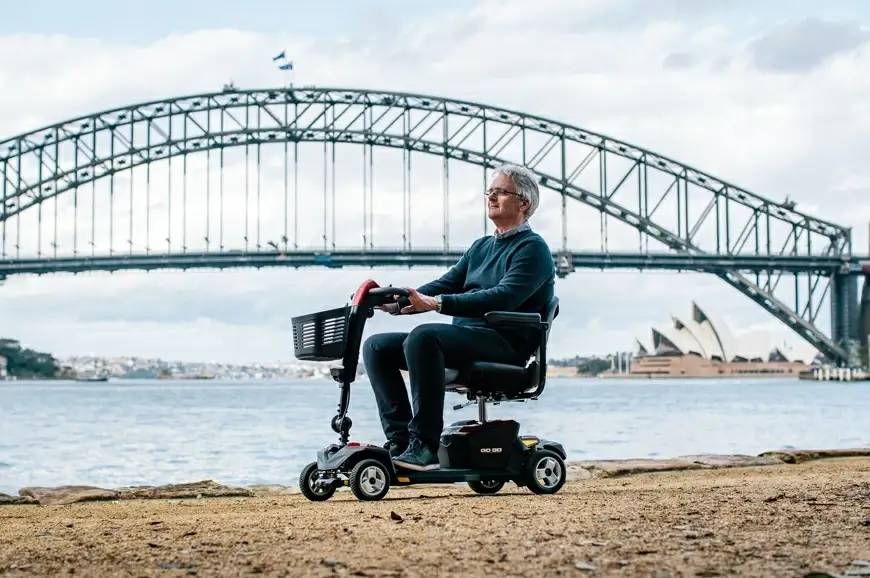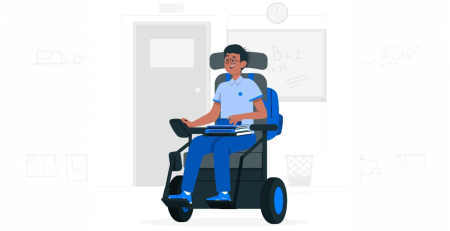- No products in the cart.
How to use your mobility scooter across all environments
It can be difficult for individuals to get accustomed to using a mobility device, such as a scooter or a power chair, especially if they have been independent for so long. There are so many features, additions, and accessories that can make the buying process overwhelming. Once you’ve made your selection to fit your medical needs, it’s time to start using your mobility scooter in all the places you need help getting around.
This sounds like the easy part, but some individuals may not know how to safely use their new device in accordance with their lifestyle. Individuals who want a mobility scooter for the purpose of going down the block to the grocery story will need different specifications than a person who wants to take their mobility scooter on vacation, to friends’ houses, and restaurants. Each of these locations has different accessibility measures in place as well as various considerations to be mindful of for your safety.
There was once a time when mobility scooters were primarily used by individuals who were medically-complex or frail. Most often, this also meant mobility scooters were used by the elderly. However, mobility scooters have exploded in popularity over the past 20 years. This is due in part to an increased life expectancy as well as individuals living — both independently and with the assistance of others — with a variety of chronic and acute conditions. In short, there is no longer a standard picture of an individual who commonly relies on a mobility scooter to navigate their community and home. Young and old individuals with a variety of medical concerns are now using mobility scooters to meet both short-term and long-term transportation needs.
For this reason, it is equally important for individuals to know the features of each location while remaining aware of their own strengths and abilities. As an example, individuals who do not have the ability to sit upright for an extended period of time or complete the motions necessary to get in and out of the scooter on their own will not be a good candidate for such a device. On the other hand, individuals who can independently reposition within the chair to ensure their muscles and joints remain aligned during longer trips would benefit from the use of a mobility scooter. Individuals will want to consider their suitability for the particular piece of equipment before learning whether or not it allows them to interact with their environments of choice.
Outside
Whether travelling between houses on the same street or over a longer distance, mobility scooter users who plan to take their device outside will want to ensure their model is appropriate for the unknown variables they may encounter outside. For example, individuals who plan to travel equally across uneven and smooth terrain will want a mobility scooter with rugged, durable tires that are built to withstand a variety of surfaces. Individuals who mostly plan to stay inside or intend to use a car to transport their scooter where they wish to use it will be okay using smaller, low-maintenance pneumatic tires that allow for precise turning in tight spaces. Having a good sense of your day’s activities will help you choose the device that is best for your needs.
Scooter users who live in a condominium complex or somewhere with a homeowner’s association (HOA) will want to check their local regulations before purchasing a scooter for outdoor use. Many HOAs restrict the use of mobility scooters on sidewalks, local roads, and in other neighborhood areas, so this may prohibit scooter use outside of the home or driveway. Regardless of whether you use your scooter down the street or only in the area just around your home, you will want to be mindful of the incline that is present. Some scooters are well-equipped to deal with inclines, while others do not do well on any type of a grade. Individuals should look for the maximum angle that the four wheels of their scooter can safely achieve in order to allow for navigation across hilly surfaces near them.
Similar roadway considerations should be made to ensure your safety. Some individuals may purchase a mobility scooter with the expectation of traveling on main roads to get to the store or other community settings. Mobility scooters are not designed to be protective enough to shield users from the elements, including debris from the road, weather patterns, and the ability to keep up with a regular stream of traffic. Most mobility scooters are also not ideal for use in bike lanes, because they do not move fast enough to keep on pace with cars travelling nearby.
At home
Individuals who seek indoor assistance from mobility scooters should especially be aware of size, as this can be a make or break factor relative to the scooter’s use in the home. Individuals should be mindful of ground clearance, which is the space on the bottom of the scooter between the wheels. While there are mainly flat surfaces within the home, ground clearance will be important when crossing thresholds, navigating more dense terrain such as low-level or shag carpeting, and avoiding obstacles such as items on the floor.
While the speed of mobility scooters is not nearly as fast as most power chairs or vehicles, they can still be dangerous if not used properly. Individuals should take this maximum speed into consideration when travelling throughout their home. When navigating tight areas or blind corners, individuals should utilize their rearview mirror, remain aware of the boundaries of their scooter, and go slowly to ensure for the safety of themselves and others.
In the community
Those with mobility impairments may also opt to use their scooter at stores, restaurants, in hotels, and on vacation. This is a wonderful way to keep active and engage within the community despite having either minor or severe medical concerns that limit your ability to get around. When navigating any environment outside of their own home, individuals should be sure to monitor their battery life. The duration of a fully-charged mobility scooter battery is typically between 5-6 hours. However, this is highly dependent on the type of surface where the scooter is being used. Individuals who only use their scooters inside on a mix of tile and very low-level carpeting will experience longer battery life than those who navigate hills, uneven pavement, and a variety of bumpy or natural surfaces.
Individuals who take their scooter anywhere within the community should be prepared with a fully-charged battery before they leave their home. Additionally, anyone who plans to take longer trips (either day trips or overnight stays) should be sure to take their charger with them to ensure there are no gaps or barriers to their safe transport back home.
Mobility scooters must be thoughtfully purchased only after making an accurate assessment of where an individual’s needs lie. Only one-third of mobility scooter users report that they consulted a healthcare professional or specialist before they made their purchase. Anyone with mobility impairments should receive a comprehensive, person-centered evaluation to determine the barriers or strengths that are present and can impact their successful use of a scooter. Individuals should consult a mobility specialist or receive a doctor’s referral for an evaluation from a physical therapist or occupational therapist. These professionals can provide a detailed, objective view of a person’s circumstances and make mobility recommendations accordingly.
Overall, many research studies show that scooter users feel that assistive mobility devices enhance their ability to participate in a range of activities, increase their independence, promote a sense of personal security, and foster a greater sense of well-being. However, these outcomes can only be achieved by doing research and consulting experts to pick a scooter that best enhances their mobility across all settings.















